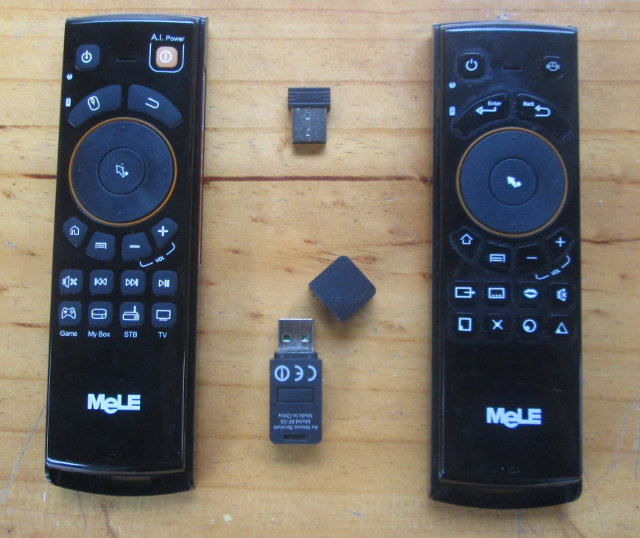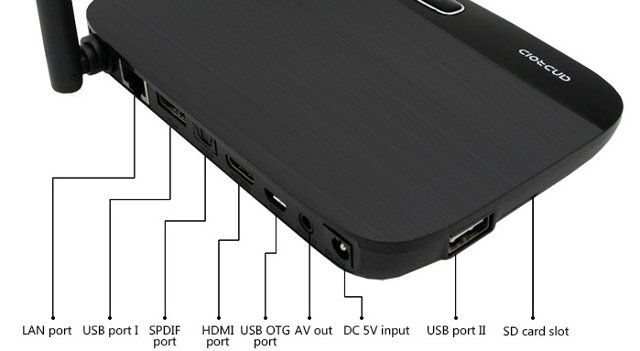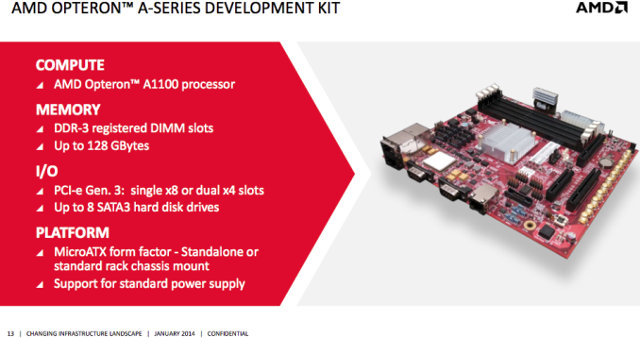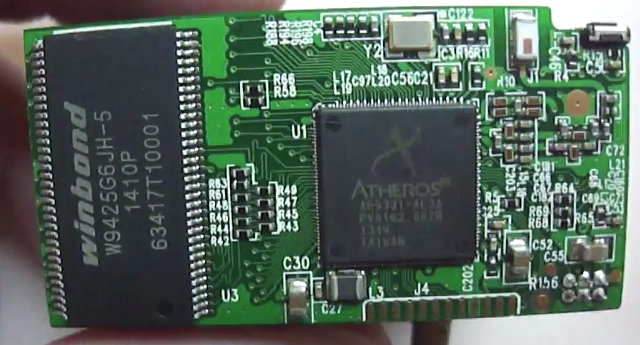Software-Defined Radios (SDR) are neat little devices that capture radio signals which are then filtered and decoded by software on your PC or embedded system. The currently used radio spectrum is extremely wide from 3 to 30Hz for submarine communication up to 30 to 300+ GHz or more for applications such as amateur radio or radio astronomy. So the price of hardware needed for SDRs varies greatly depending on the frequency range supported, bandwidth, and other technical parameters. Hobbyists can use “low cost” ($300 – $400) FPGA SDR boards such as bladeRF or HackRF, or go ultra-cheap with $20+ RTL-SDR USB TV tuners. I’ve been informed there’s a development kit sold under the name “100KHz-1.7GHz Full Band UV HF RTL-SDR USB Tuner Receiver DIY Kit” based on the latter, but with extra components, on various sites such as Buyincoins, Ebay, Aliexpress, etc.. for just $33 to $45. The problem with […]
Some Projects on Nvidia Jetson TK1 Development Board: Nintendo Emulator, USB3 Webcam, and Robotics
Nvidia Jetson TK1 is a development board powered by the company’s Tegra K1 quado core Cortex A15 processor, and especially a Kepler GPU that allows for OpenGL 4.4. It has shipped to developers around April/May, and some of them have showcased their projects, or tested some hardware. Dolphin Emulator on Nvidia Jetson TK1 Dolphin is an emulator for Nintendo GameCube and Wii console that supports full HD (1080p) rendering, and run on Android, Linux and Mac OS, and there’s also an Alpha version for Android. Ryan Houdek (Sonicadvance1), one of Dolphin’s developers, has leveraged Kepler’s OpenGL support via Nvidia’s GPU drivers, to port the emulator to the platform running on Ubuntu, but it should work as well on Tegra K1 hardware running Android such as XiaoMi MiiPad tablet. You can watch Mario Kart: Double Dash demo running at full speed on the Nvidia board below. According to the developer, such […]
Mele F10 Deluxe Air Mouse Review
Mele F10 is an air mouse using 2.4GHz RF technology, that can be used as a remote, a QWERTY keyboard, and a wireless mouse. That’s my favorite input device for Android TV Box, and I use it regularly for my product reviews. The company has now introduced an improved model called Mele F10 Deluxe with trick mode buttons, a gaming mode thanks to a gyroscope, and an IR learning function to use it as a universal remote. Mele sent me a sample for evaluation, so I’ll start with some unboxing pictures, and compare it to the original Mele F10, before testing the remote. Mele F10 Deluxe Unboxing I’ve received the air mouse in the package below that highlights the four main features: Air mouse, Game Controller, Wireless Keyboard, and IR Learning. We’ll find the air mouse, a tiny RF dongle, a USB cable for charging, and a user’s manual describing […]
Dual Core VolksPC Android and Debian Mini PC Gets Crowdfunded
Last months, I tested VolksPC’s Android/Debian unified distribution on MK808 mini PC, which runs both operating systems at the same time, and allows you to switch instantaneously and seamlessly between the two. I was impressed by the performance and stability of the system, although there were still a few software bugs, as well as issues related to MK808 hardware (Wi-Fi disconnection), and possibly its 5V/1A power supply (system reboot when inserting SD card reader or flash drive). The company has now started a crowd-funding campaign on Indiegogo to manufacture dual core Android TV box with their unified distribution. VolksPC specifications: SoC – Rockchip RK3066 dual core ARM Cortex-A9 processor @ 1.4Ghz with Mali-400MP4 GPU System Memory – 1GB DDR3 Storage – 8 GB NAND Flash (for Android), 8GB MicroSD card (Debian Wheezy) Video Output – HDMI 1.3, AV jack Audio Output, HDMI, AV jack, and optical S/PDIF Connectivity – 10/100M […]
Linaro 14.07 Release with Linux Kernel 3.16 and Android 4.4
Linaro 14.07 has just been released with Linux Kernel 3.16-rc6 (baseline), Linux Kernel 3.10.50 (LSK), and Android 4.4.4. This month, Linaro has continued development on Juno 64-bit ARM development board, as well as other member boards from Broadcom (Capri), Qualcomm (IFC6410), Hisilicon D01, Samsung (Arndale / Arndale Octa), etc.. Android have been upgraded to version 4.4.4 with images released for Pandaboard, Arndale, Nexus 10, and Nexus 7, built with Linaro GCC 4.9. Here are the highlights of this release: Linux Linaro 3.16-rc6-2014.07 released GATOR version 5.18 (same version as in 2014.04) updated basic Capri board support from Broadcom LT. Good progress in upstreaming the code: now the topic has 21 patch on top of v3.16-rc4 vs 53 patches on top of v3.15 in 2014.06 cycle removed cortex-strings-arm64 topic as the code is accepted into the mainline new topic from Qualcomm LT to add IFC6410 board support updated Versatile Express ARM64 […]
littleBits CloudBit Wi-Fi Module Simplifies DIY IoT Designs
littleBits Electronics is a company selling tiny modules that snap together with tiny magnets for prototyping called… littleBits. They do not require soldering, wiring, or programming, can be buttons, sensors, motors, etc…, and are the electronics equivalent of LEGO, and are suitable to 8 years old and older kids. The company have recently launched a new product called CloudBit, a module based on Freescale i.MX233 with Wi-Fi connectivity meant to be used/snapped with existing littleBits. CloudBit hardware specifications: Processor – Freescale i.MX233 ARM926EJ-S processor @ 454MHz System Memory – 64MB of RAM; Storage – microSD slot with included 4GB micro SD card pre-loaded with a customized Arch Linux ARM distribution Connectivity – 802.11b/g Wi-Fi via included USB dongle USB – micro USB port (for power only) Connectors – 2x BitSnap connectors for LittleBits connectivity using i.MX233 ADC/DAC signals Debugging – Pads for UART (3.3V, 8-N-1, 115,200 baud) to access the […]
AMD Announces Availability of their $3,000 Opteron A1100-Series 64-bit ARM Development Kit
AMD Opteron A1100 Server SoCs, codenamed “Seattle”, come with four to eight ARM Cortex A57 cores, and earlier this year, the company unveiled both the processors and a development kit. You can now apply for “AMD Opteron A1100 Series 64-bit ARM developers kit”, and if you’re selected, you’ll “just” need to pay $2,999 to receive the board and related tools. The kit targets software and hardware developers, as well as early adopters in large datacenters. AMD Opteron A1100 Board hardware specifications: SoC – ARM Opeteron A1000 with 4 ARM Cortex-A57 cores System Memory – 2x Registered DIMM with 16 GB of DDR3 DRAM (upgradeable to 128GB) Storage – 8 Serial-ATA connectors Connectivity – Not mentioned, but there seems to be an RJ45 port on the pic, and another SFP cage, both probably 10 Gbit Ethernet since it’s the speed supported by Opteron A1100. Expansion slots – PCI Express connectors configurable […]
Kankun KK-SP3 Wi-Fi Smart Socket Hacked, Based on Atheros AR9331, Running OpenWRT
Kankun KK-SP3 is a $20 Wi-Fi smart socket that can be controlled via iOS and Android app. But one person created a Kankun community on Google+ to try to hack the device and control it from a PC, or from outside the home network for example. Up to now, the device has been opened, found to run OpenWRT, and one the member wrote a Windows app to control the socket from a PC. It is a basic smart socket, without power monitoring capabilities, and unless you start hacking the hardware, all you can do is basically turn it on and off. The device is based on Qualcomm Atheros AR9931, found in many low cost routers supporting OpenWRT, and the socket indeed runs OpenWRT, which you can access via SSH or Telnet (username/password: root/admin). There’s 32MB RAM (Winbond W9425G6JH), and a 10A OMRON relay. The smart socket actually communicates with the […]








